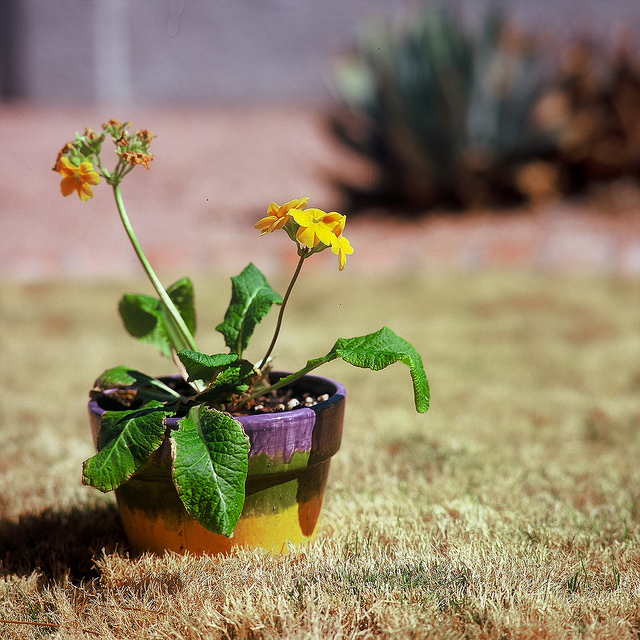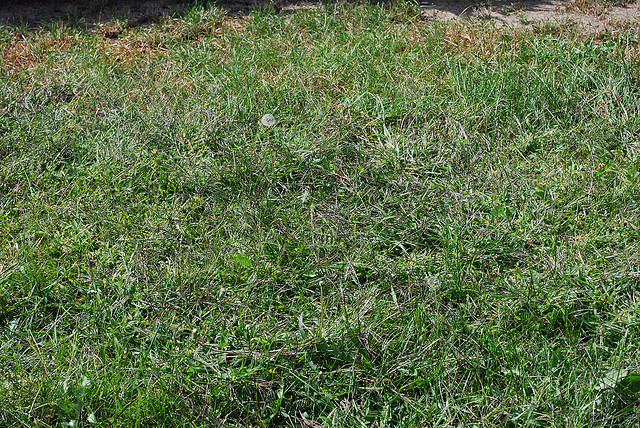Nothing looks better than rich, healthy green lawn, but should your lawn be suffering from malnourishment, then it may start to look a little lacklustre. Luckily, malnourished lawns show symptoms that are reflective of the nutrient they are lacking, meaning that lawn lovers can quickly identify the issue and help make their grass healthy again.
Here are some tell-tales signs that show the grass on your lawn is malnourished and in need of enrichment.
Problem – Yellow Grass
 If your once luscious lawn is turning yellow, then it is likely that it is lacking a number of key nutrients. Yellowing leaves can indicate a lack of nitrogen, potassium, phosphorus, or sulphur. If suffering from a yellow-leaved lawn, then you will need to determine which nutrient your lawn is lacking. Nitrogen and sulphur deficiencies in grass have the same symptoms, so you may need to test the leaves or use a fertiliser that contains all of the mentioned nutrients.
If your once luscious lawn is turning yellow, then it is likely that it is lacking a number of key nutrients. Yellowing leaves can indicate a lack of nitrogen, potassium, phosphorus, or sulphur. If suffering from a yellow-leaved lawn, then you will need to determine which nutrient your lawn is lacking. Nitrogen and sulphur deficiencies in grass have the same symptoms, so you may need to test the leaves or use a fertiliser that contains all of the mentioned nutrients.
Fixing the Issue
Once you know which nutrient deficiency is causing the lawn to yellow, you can then choose an appropriate fertiliser to combat the problem. For a lawn that is lacking nitrogen, using a fertiliser like sulphate of ammonia that has a high nitrogen content will help make the grass green again. For a potassium deficient lawn, you should use sulphate of potash. Potassium helps with photosynthesis, so using a fertiliser that is potassium rich will help grass get energy from the sun and return to a healthy green colour.
Alternatively, using a Spring & Summer Lawn Feed during the warmer months will provide nitrogen, phosphorus, and potassium. Our Spring & Summer Lawn Feed also contains iron that will help deter moss growth and magnesium that is used by grass in photosynthesis, helping to keep your lawn full and green.
Problem – Slow Growth
If your lawn isn’t growing like it should, then this could be because of a phosphorus deficiency. Phosphorus deficiencies are rare, but the nutrient is key to healthy roots and shoot growth so it’s important to make sure that your lawn is getting enough of it. Other symptoms of a lawn lacking in phosphorus are leaves turning yellow or even purple, and reduced leaf density, which can cause bald spots on your lawn.
Fixing the Issue
Apply a phosphorus rich fertiliser, like our Autumn & Winter Lawn Feed, which has a mix of nitrogen, phosphorus and potassium. Applying this fertiliser during the autumn and winter months will help promote healthy roots, reducing the likelihood of problems during the spring.
Problem –Brown Leaves and Wilting
 A lack of potassium can cause your grass to turn brown or yellow and its leaves to be more likely to wilt. Potassium helps leaves photosynthesise and also helps with water uptake, so a lack of it can lead to grass becoming brown or experiencing poor growth.
A lack of potassium can cause your grass to turn brown or yellow and its leaves to be more likely to wilt. Potassium helps leaves photosynthesise and also helps with water uptake, so a lack of it can lead to grass becoming brown or experiencing poor growth.
Fixing the Issue
Use a fertiliser that has a high potassium concentrate, but be careful of over fertilising. Excess potassium can cause your lawn to lack calcium and magnesium, which can also cause grass to lose its green colour.
Photo by Mary-Frances Main/ CC BY
General Care
The best way to avoid nutrient deficiency problems is to have a regular care schedule for your lawn. Applying appropriate lawn feed throughout the year will give your grass the right nutrients when they need them the most, helping it to maintain a healthy turf density and colour.
Proctors are an established fertiliser company that have been helping keep lawns healthy since 1812. Purchase our products online in our shop, or call us on 0117 311 1217 if you have any questions. Alternatively, use our Ask John service for answers to your lawn care questions.























